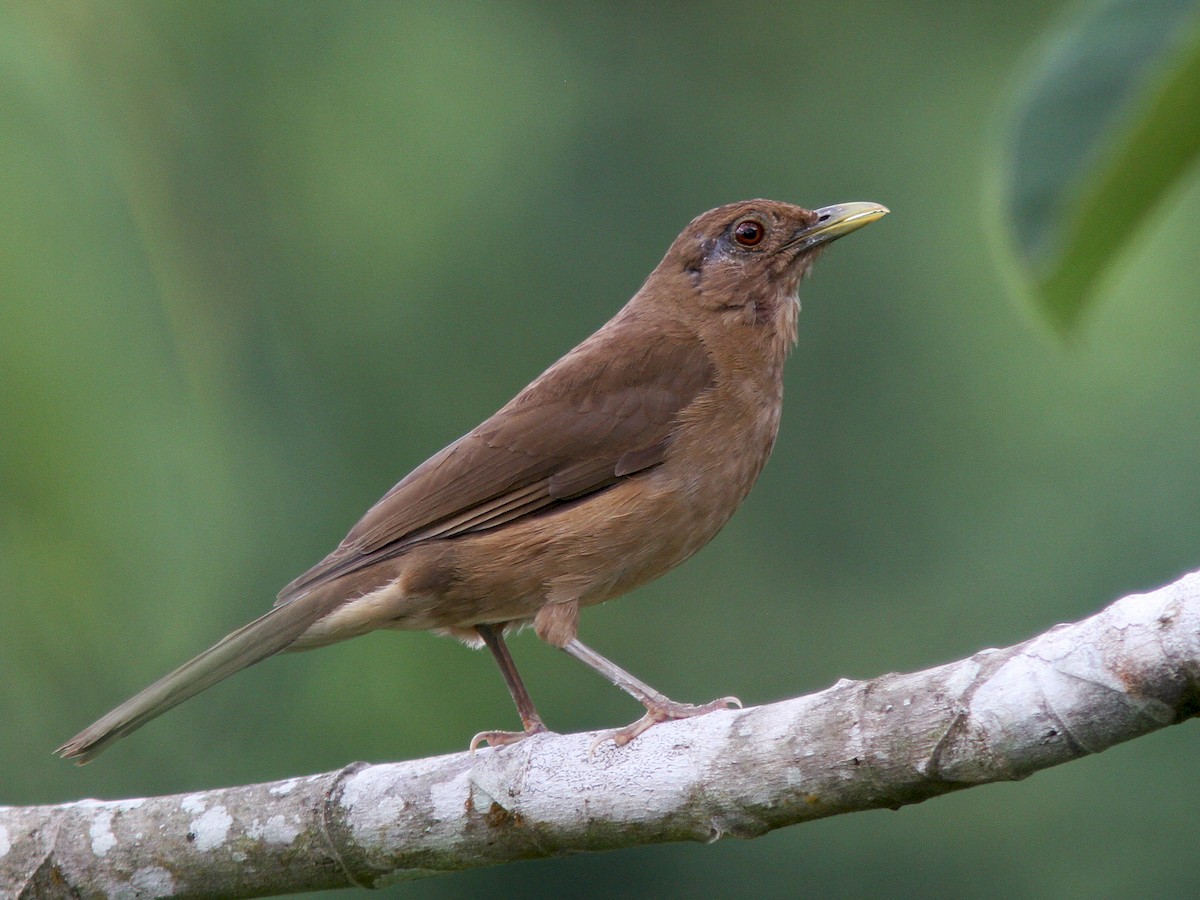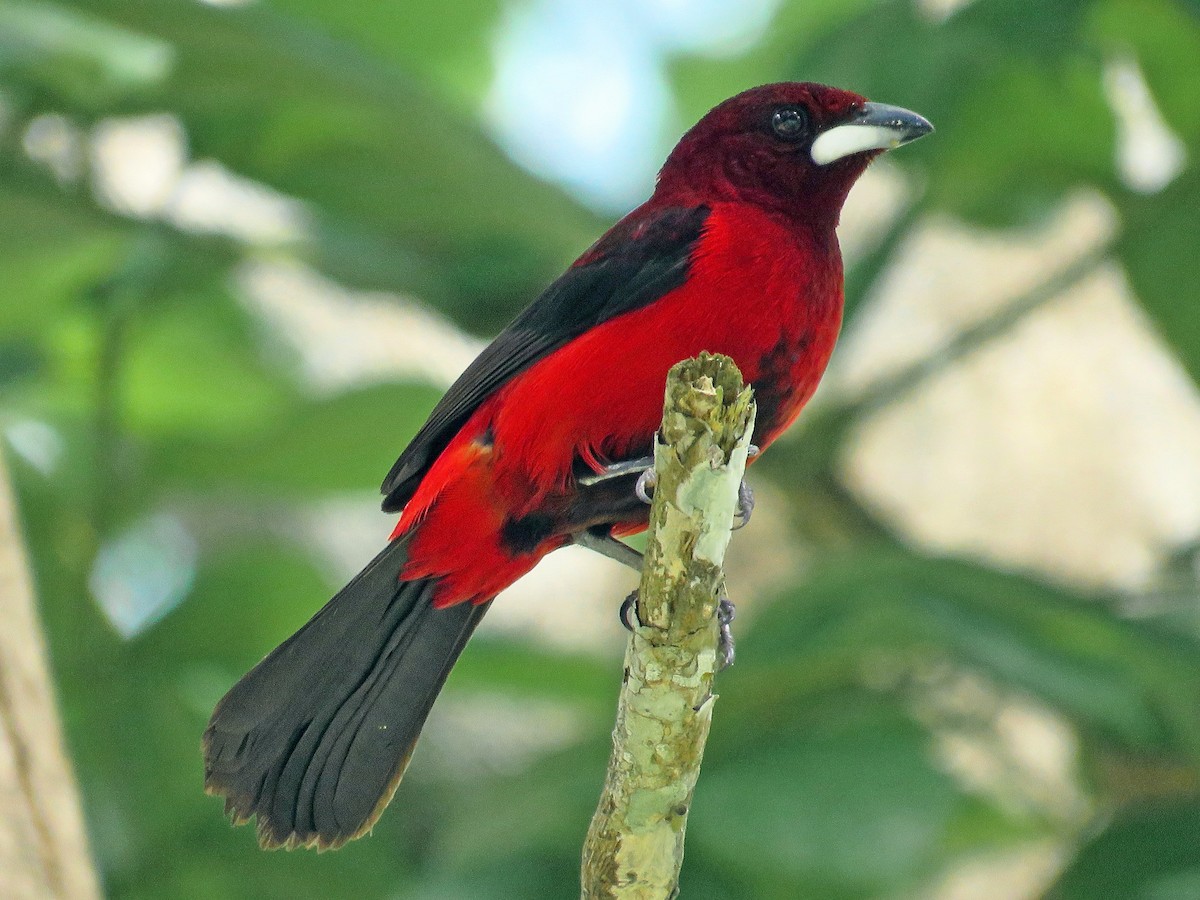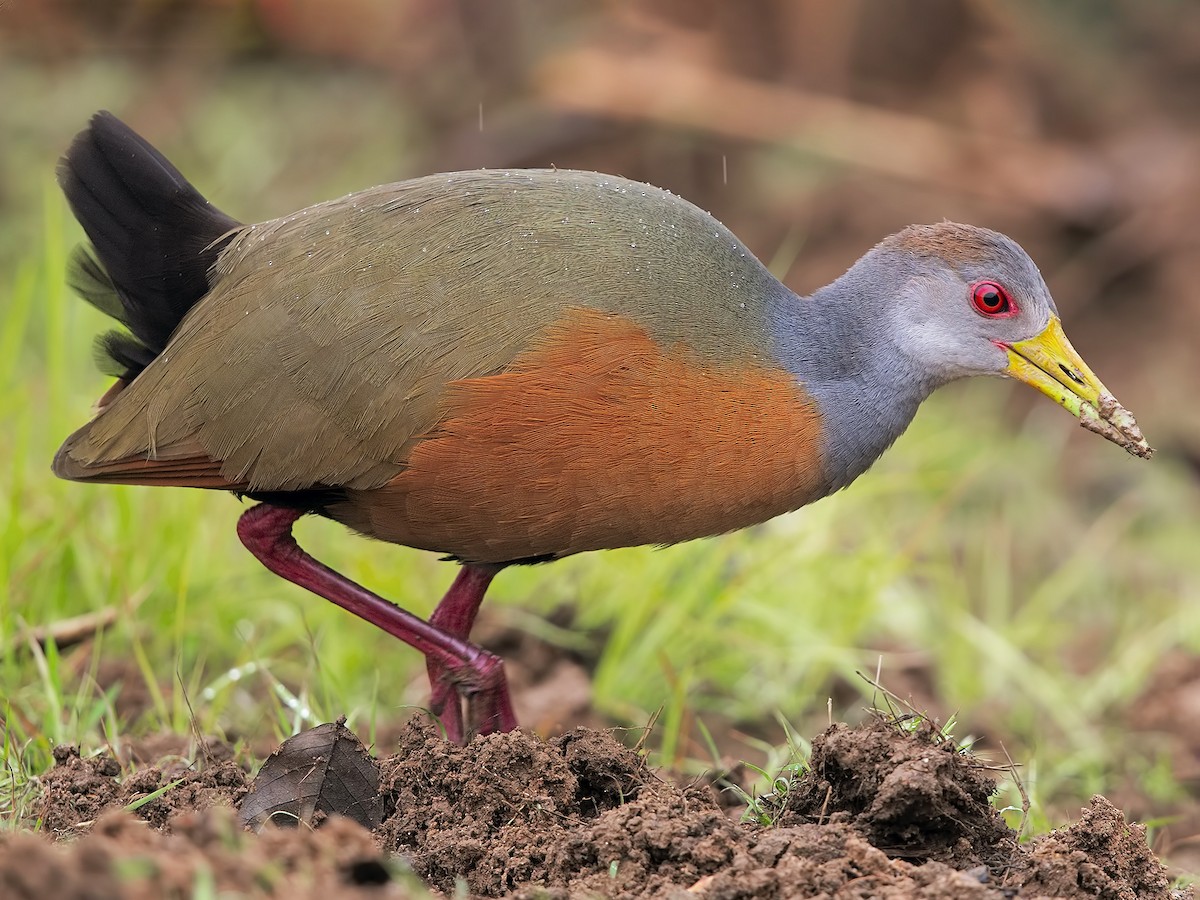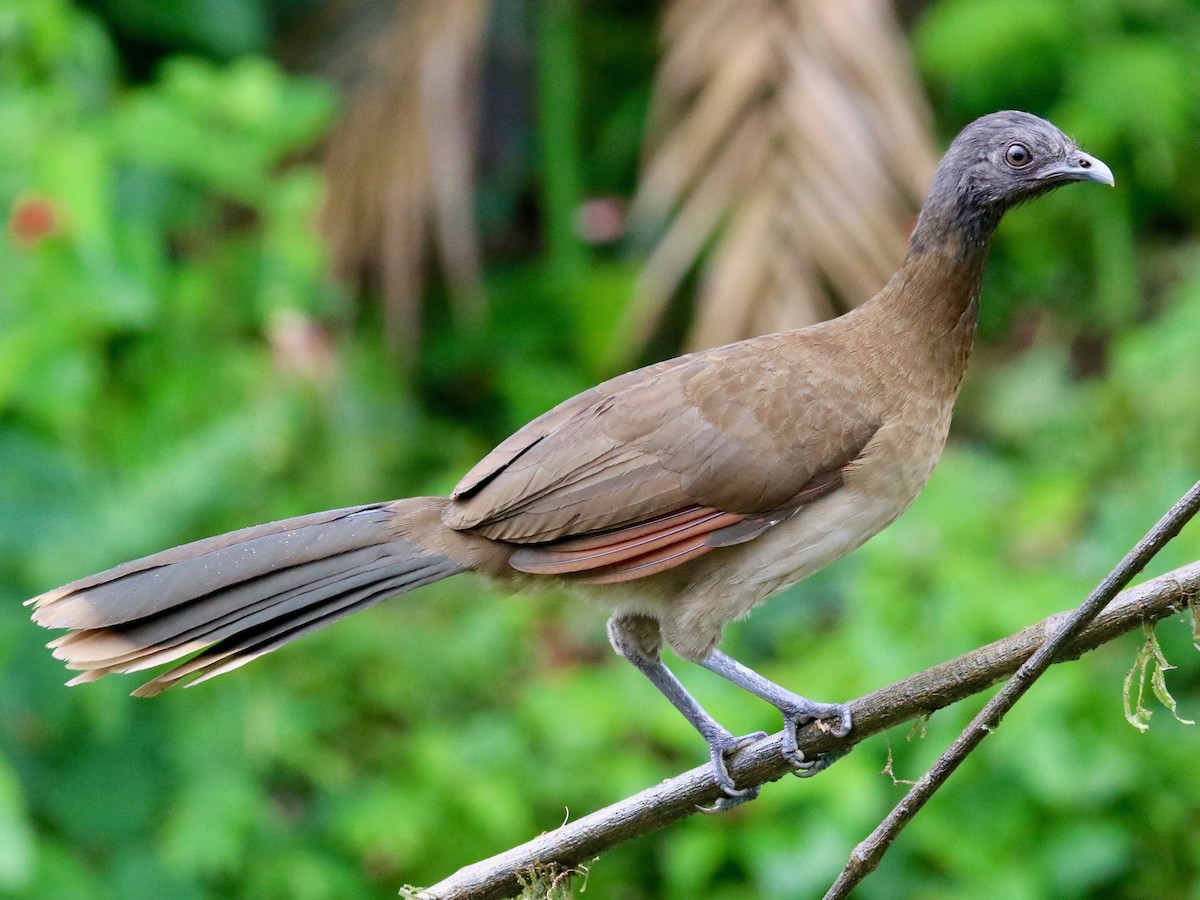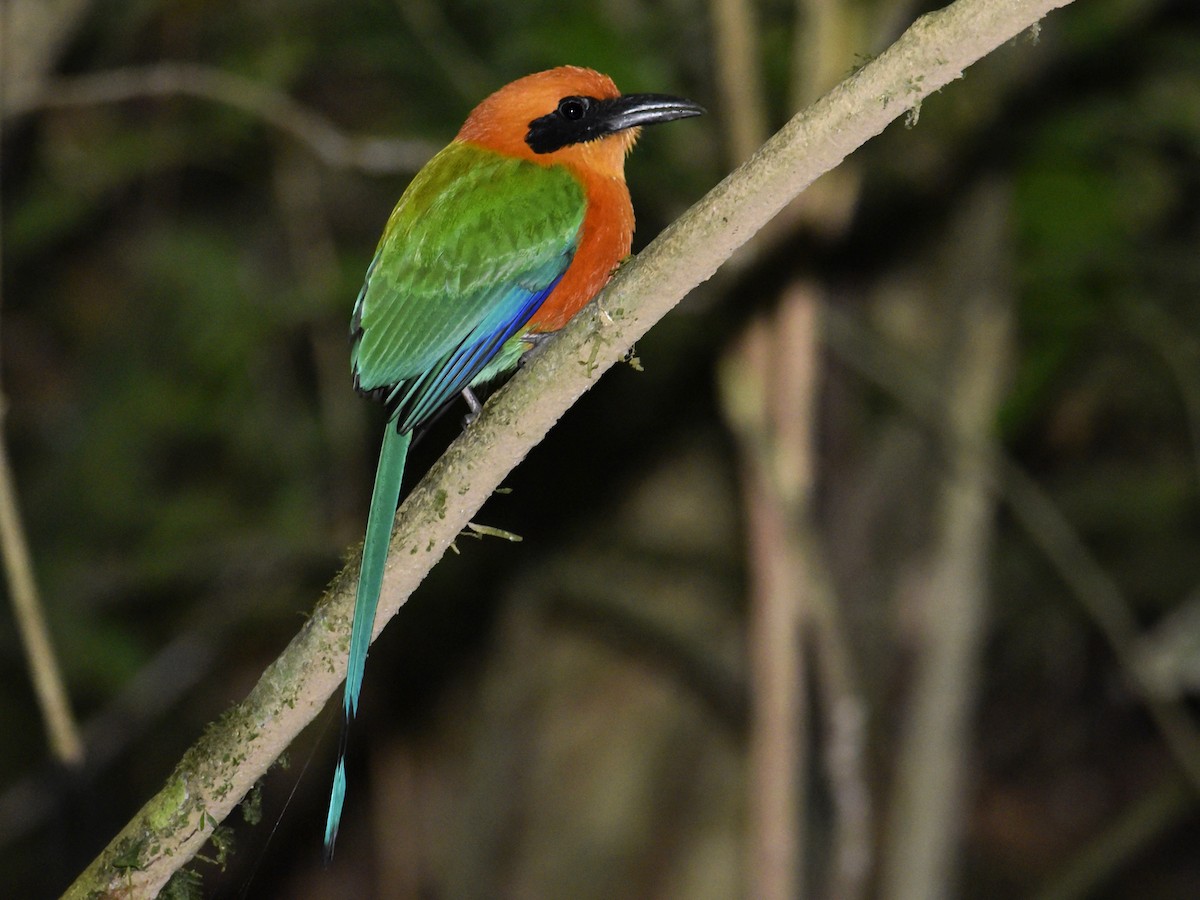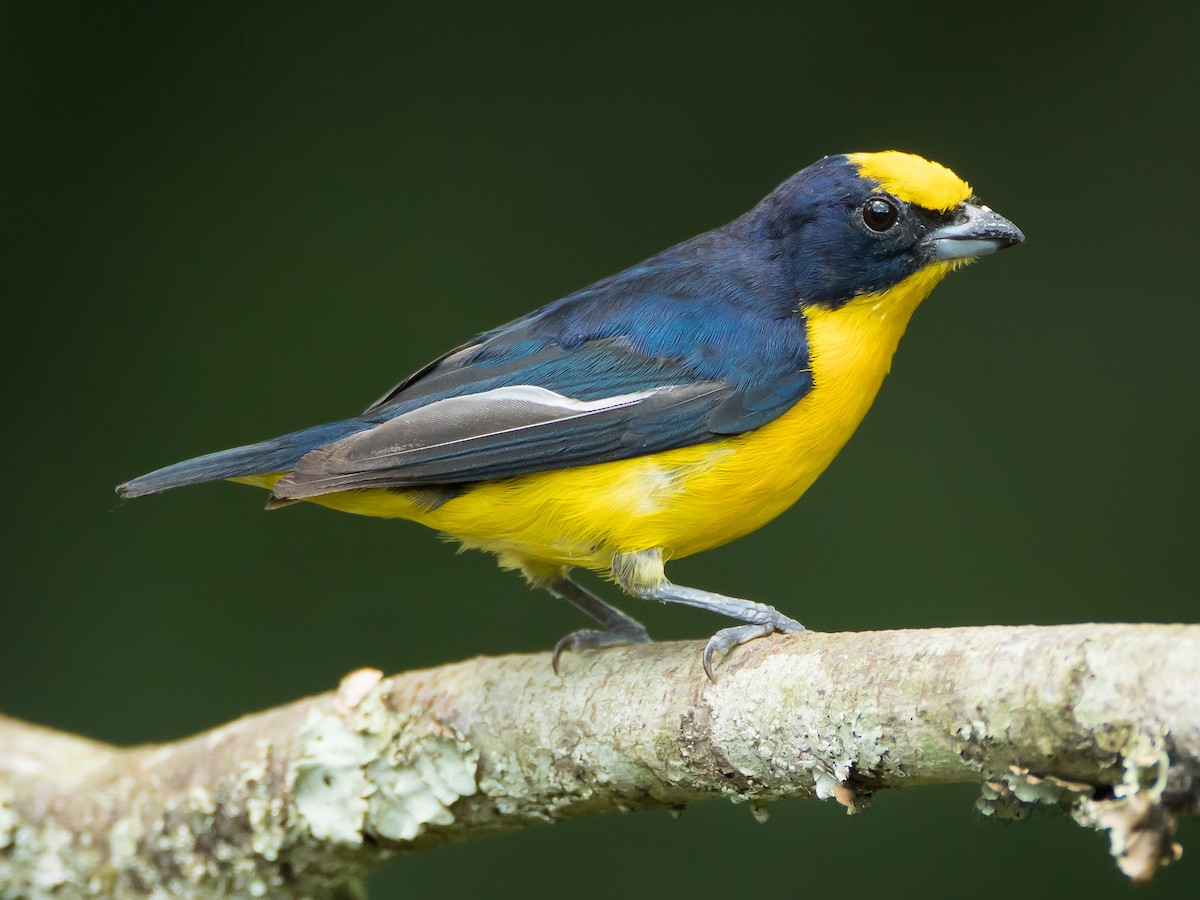Panama Live: The Final Results Are In!
November 16, 2020—Posted by Rachael Mady on behalf of Bird Cams Lab
Cam Viewers Collected Data In Real Time And Made Discoveries About The Foraging Patterns of Tropical Feeder Birds
For the first time ever, viewers from around the world collaborated with scientists to collect data in real time while watching the Panama Fruit Feeder cam in an investigation called Panama Live. From February 10 – 24, more than 60 people around the world made over 11,000 observations to answer the community-chosen research questions: “When do focal species arrive at the feeder, and how does this vary from day to day? Does the timing of food affect when birds arrive at the feeder?”
They sought to better understand the foraging patterns of six tropical species that we know little about: Clay-colored Thrush, Crimson-backed Tanager, Gray-cowled Wood-Rail, Gray-headed Chachalaca, Rufous Motmot, and Thick-billed Euphonia.
Clay-colored Thrush by Larry Therrien/Macaulay Library; Crimson-backed Tanager by Rolando Jordan/Macaulay Library; Gray-cowled Wood-Rail by Marco Valentini/Macaulay ; Gray-headed Chachalaca by Robbin Mallett/Macaulay Library; Rufous Motmot by Daniel Irons/Macaulay Library; Library; Thick-billed Euphonia by Dorian Anderson/Macaulay Library
Once the data was collected, the Bird Cams Lab community came together to explore the data via interactive graphs, online forums, and a live webinar in which we watched highlight clips of the focal species and discussed patterns in the data. Today we conclude the Panama Live investigation with the final step: sharing out the results.
Looking at the data, it appears that the six species greatly differ in their arrival patterns, within and between days. Some species, like the Clay-colored Thrush, have a high percentage chance of arriving at the feeder throughout most of the day (Figure 1) while other species are more likely to visit in the morning and evening, showing a bimodal pattern (Figure 2).
Clay-colored Thrushes Were At The Feeder All Day
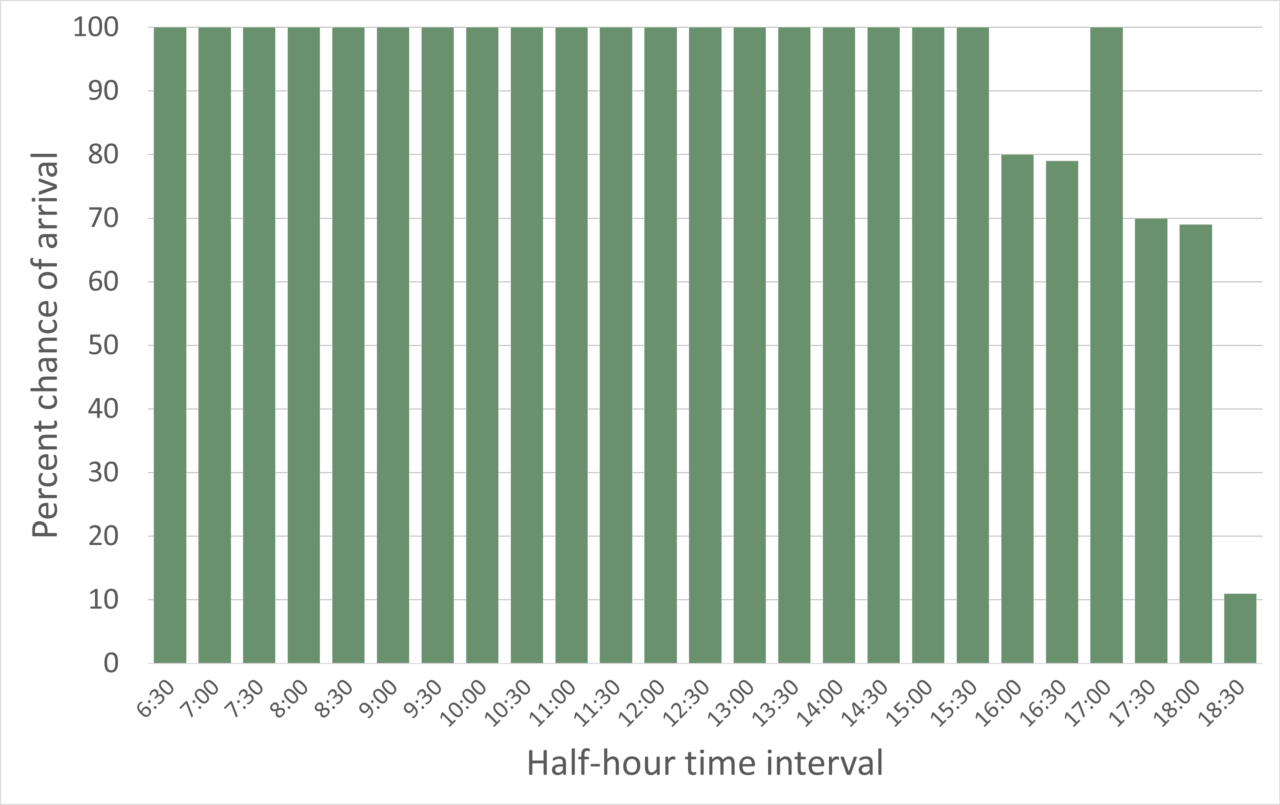 Figure 1. A bar chart in which the height of each bar represents the percentage chance that a Clay-colored Thrush will arrive during a half-hour interval. Each day was split into 30-minute intervals from 6:30 A.M. to 6:30 P.M.
Figure 1. A bar chart in which the height of each bar represents the percentage chance that a Clay-colored Thrush will arrive during a half-hour interval. Each day was split into 30-minute intervals from 6:30 A.M. to 6:30 P.M. Two Species Were More Likely To Visit The Feeder In The Morning Or Evening
 Figure 2. A bar chart in which the height of each bar represents the percentage chance that a species will arrive during a half-hour interval. The green bars refer to the Gray-cowled Wood-Rail and the blue bars refer to the Rufous Motmot. Each day was split into 30-minute intervals from 6:30 A.M. to 6:30 P.M.
Figure 2. A bar chart in which the height of each bar represents the percentage chance that a species will arrive during a half-hour interval. The green bars refer to the Gray-cowled Wood-Rail and the blue bars refer to the Rufous Motmot. Each day was split into 30-minute intervals from 6:30 A.M. to 6:30 P.M. One of the most intriguing patterns in the data, and one that several Bird Cams Lab members proposed several ideas to explain it, was the delay in the arrival of the Gray-cowled Wood-Rail once food was put out (Figure 3).
Delay In Arrival Of Gray-cowled Wood-Railed After Food Is Provided
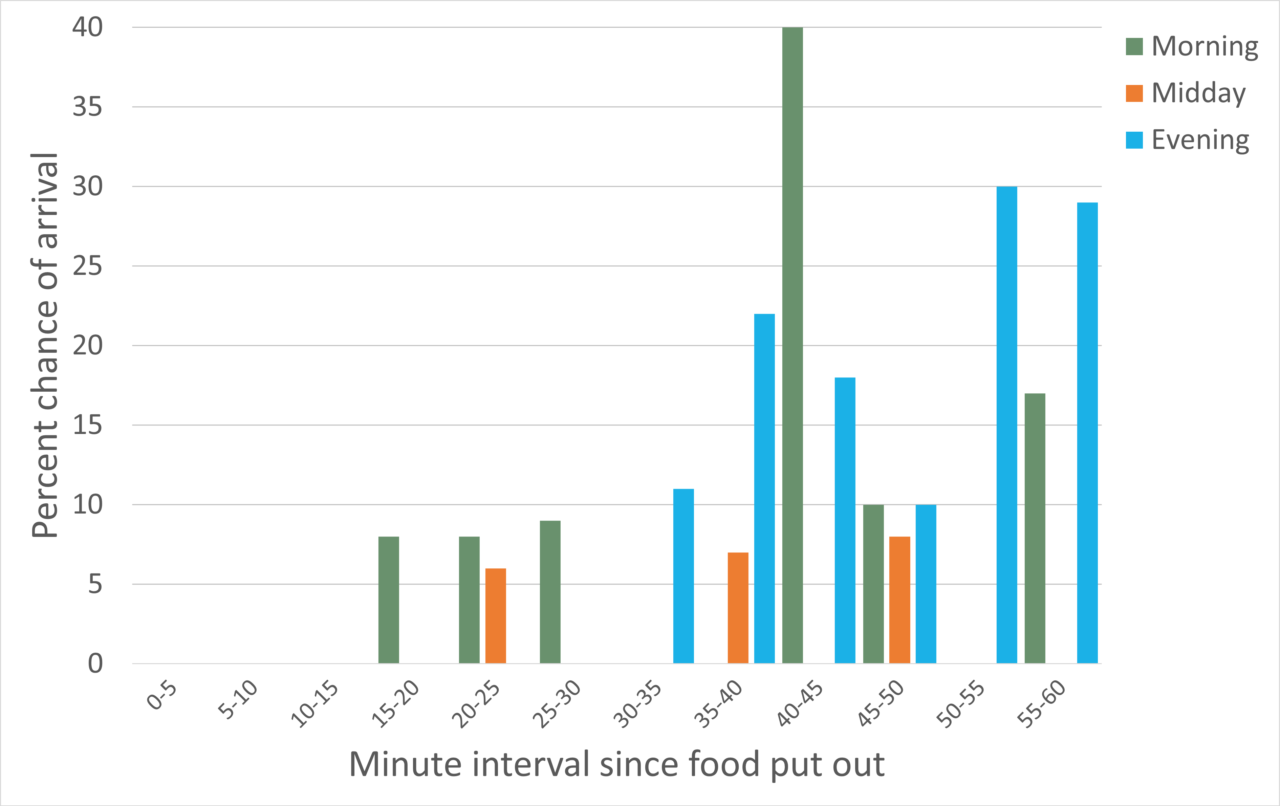 Figure 3. A bar chart in which the height of each bar represents the percentage chance that a Gray-cowled Wood-Rail will arrive at the feeder during a five-minute interval since food is put out. Each color bar refers to one of three time periods: morning refers to 6:00 A.M. – 10:00 A.M., midday refers to 10:00 A.M. – 2:00 P.M., and evening to 2:00 P.M. – 7:00 P.M. The time since food is put out is split into five-minute intervals up until 60 minutes with zero referring to the time when food is put out. For example, 0-5 refers to the time period 0-5 minutes since food is put out.
Figure 3. A bar chart in which the height of each bar represents the percentage chance that a Gray-cowled Wood-Rail will arrive at the feeder during a five-minute interval since food is put out. Each color bar refers to one of three time periods: morning refers to 6:00 A.M. – 10:00 A.M., midday refers to 10:00 A.M. – 2:00 P.M., and evening to 2:00 P.M. – 7:00 P.M. The time since food is put out is split into five-minute intervals up until 60 minutes with zero referring to the time when food is put out. For example, 0-5 refers to the time period 0-5 minutes since food is put out.In the live webinar, many people echoed each other’s ideas or offered additional ones to explain the pattern:
Does the rail show up some time interval after some other species, as though they use the other as an indicator that there’s food? —James Roper
Maybe the rail doesn’t keep an eye on the feeder to see when the food is put out but notices increased activity and goes then, or even waits until the increased activity dies down a bit. —Mary Ann Good
Do the wood rails come at times to avoid other birds, such as the chachalacas? —David Hamilton
Additionally, Bird Cams Lab members asked to know more about how “sampling effort” varied throughout the data collection period, so we made an extra set of visualizations. By sampling effort, we are referring to the amount of time at least one participant was watching and collecting data on the cam. This data isn’t biological, but methodological, and is important to consider when interpreting the biological data.
We now bring the first-ever co-created investigation on the Panama Fruit Feeder cam to a close. Thank you to everyone who participated in Panama Live, whether you helped us come up with the questions, collected data, explored the data with us, or reviewed the final report, your input shaped this investigation. Thanks to this team effort, we know more about the foraging patterns of six species that visit the Panama Fruit Feeder cam. Our preliminary findings can help inform future investigations with this cam and others!
- If you’d like to read a more detailed account of the investigation and findings, check out the Final Report.
- If you’re interested in accessing the full dataset, email birdcams@cornell.edu.
If you have any additional takeaways, thoughts, or any questions you have about this investigation, please post below!

